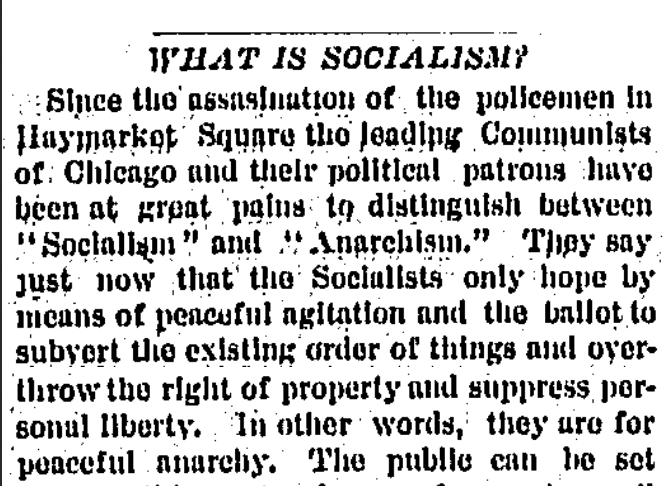By Dr. Jacob K. Friefeld
“He slips the noose over [August Spies’s] head and draws tight the knot under his left ear … Then he goes on to Fischer, then to Engel, then to Parsons …”
The Chicago Daily Tribune described the moments before the hanging of George Engel, Adolph Fischer, Albert Parsons, and August Spies, four almost certainly innocent men, in the Cook County Jail. White hoods called caps were placed over the men’s heads, legs adjusted, and last words spoken. Soon,
“the floor gives way beneath their feet, and the last word is completed in eternity. Four white objects shoot down, the clanging trap resounds through the corridor.”
This death sentence carried out in November of 1887 was set in motion in the Spring of 1886.
The late 1870s in Chicago had produced more labor unrest than the city had ever seen. After the sometimes-violent strikes of 1877, anti-union sentiment ran high in the Chicago Police Department that had begun engaging in paramilitary-style training in anticipation of future unrest.
The Federation of Organized Trades and Labor Assemblies called for a rally on May 1, 1886, in support of an eight-hour workday and to demonstrate support for an ongoing labor dispute at the McCormick Harvester company. More than 35,000 workers participated in the march and more joined in the following days. On May 3, the situation escalated as police fired on striking McCormick workers.
The following day, anarchists called for a meeting at the West Randolph Street Haymarket. Chicago Mayor Carter H. Harrison had ordered police not to interfere with the gathering. Nevertheless, police attempted to disperse the meeting just after 10:30 P.M. From somewhere near the gathering’s speakers’ cart, someone hurled a dynamite bomb at the police, killing one officer immediately. More were injured or killed in the police shooting that followed. In total, sixty police officers were injured and eight died. Unknown dozens of bystanders were injured or killed.
Chicago’s daily newspapers used the attack, blamed on anarchists, as an indictment against all forms of radicalism. The Chicago Daily Tribune equated socialism with anarchism.

Chicago Daily Tribune, 16 May 1886
Authorities never discovered the bomber’s identity, but they tried eight political radicals for murder. All twelve jurors reported being prejudiced against the defendants. The jury convicted all eight men. Seven of the eight were sentenced to death; two had their sentences commuted to life in prison.
On November 11, 1887, the state of Illinois hanged Engel, Fischer, Parsons, and Spies. A fifth man committed suicide before he could be executed.
 Mayor John P. Altgeld in 1896. (Abraham Lincoln Presidential Library and Museum)
Mayor John P. Altgeld in 1896. (Abraham Lincoln Presidential Library and Museum)
Against public pushback and insistence by President Grover Cleveland, the Democratic governor of Illinois, John Altgeld, pardoned the final three Haymarket convicts. The governor railed against the stacked jury and biased judge and argued that the evidence showed:
...that the bomb was, in all probability thrown by some one seeking personal revenge; that a course had been pursued by the authorities which would naturally cause this; that for a number of years prior to the Haymarket affair there had been labor troubles, and in several cases a number of laboring people, guilty of no offense, had been shot down in cold blood by Pinkerton [detectives], and none of the murderers were brought to justice.
Countries in the Americas, Africa, Europe, and Asia now celebrate May 1 as a workers’ day, recognizing the Haymarket Affair in Illinois as an important flashpoint for the rise of the international labor movement.
Friefeld is an ALPLM research historian specializing in Midwestern history.